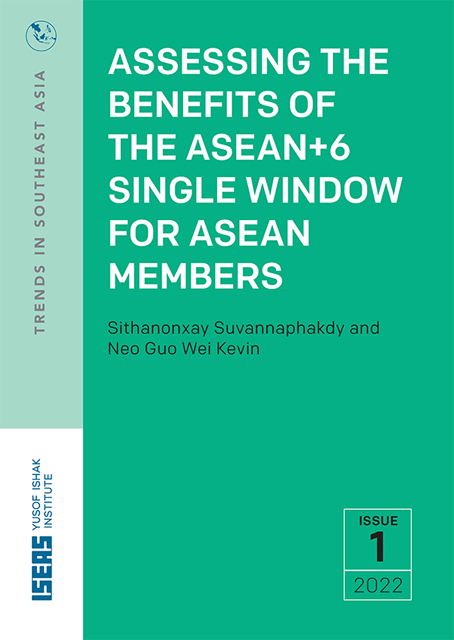Book contents
- Frontmatter
- Foreword
- Assessing the Benefits of the ASEAN+6 Single Window for ASEAN Members
- Assessing the Benefits of the ASEAN+6 Single Window for ASEAN Members
- Annex 1: Data on Trade Facilitation Measures
- Annex 2: Methodology for Estimating the Relationship between Trade Times and Crossborder Paperless Trade
- Annex 3: List of Countries Included in the Regression Model
- References
Annex 2: Methodology for Estimating the Relationship between Trade Times and Crossborder Paperless Trade
Published online by Cambridge University Press: 01 September 2023
- Frontmatter
- Foreword
- Assessing the Benefits of the ASEAN+6 Single Window for ASEAN Members
- Assessing the Benefits of the ASEAN+6 Single Window for ASEAN Members
- Annex 1: Data on Trade Facilitation Measures
- Annex 2: Methodology for Estimating the Relationship between Trade Times and Crossborder Paperless Trade
- Annex 3: List of Countries Included in the Regression Model
- References
Summary
The relationship between trade times and cross-border paperless trade is estimated in three steps. First, the score of six cross-border paperless trade measures in Table 1 (in the main text) is calculated by converting qualitative data into quantitative data. This is done by applying a simple scale: no implementation or data unavailability corresponds to zero; partial implementation corresponds to 0.5; and full implementation corresponds to one.
Export and import times are measured in hours. They were obtained from the World Bank’s Doing Business database. Time for exports or imports consists of two components, one for documentary compliance and another for border compliance. Documentary compliance captures the time associated with the documentary requirements of all government agencies of the origin and the destination countries. It includes the time for obtaining documents; preparing documents; processing documents; presenting documents to port authorities; and submitting documents. Border compliance captures the time associated with customs regulations and with regulations relating to other inspections that are mandatory in order for the shipment to cross the border. It includes time for customs clearance and inspection procedures conducted by other agencies.
We then use a basic econometric model to estimate the relationship between trade times and the score of cross-border paperless trade measures. The model also controls for two factors that determine trade times, but instances are not many due to the small number of observations in the dataset (forty-three—the number of countries that are key trading partners of ASEAN, see Annex 3). These two factors include the score of general paperless trade measures and the score of other trade facilitation measures.
The general paperless trade measures include:
1. electronic customs system;
2. Internet connection available to customs and other trade control agencies at border-crossings;
3. electronic Single Window system;
4. electronic submission of customs declarations;
5. electronic application and issuance of import and export permit;
6. electronic submission of sea cargo manifests;
7. electronic submission of air cargo manifests;
8. electronic application and issuance of certificate of origin;
9. electronic payment of customs duties and fees; and
10. electronic application for customs refunds
Other trade facilitation measures cover the following areas:
1. transparency;
2. formalities;
3. institutional arrangements and cooperation; and
4. transit facilitation;
- Type
- Chapter
- Information
- Publisher: ISEAS–Yusof Ishak InstituteFirst published in: 2023



